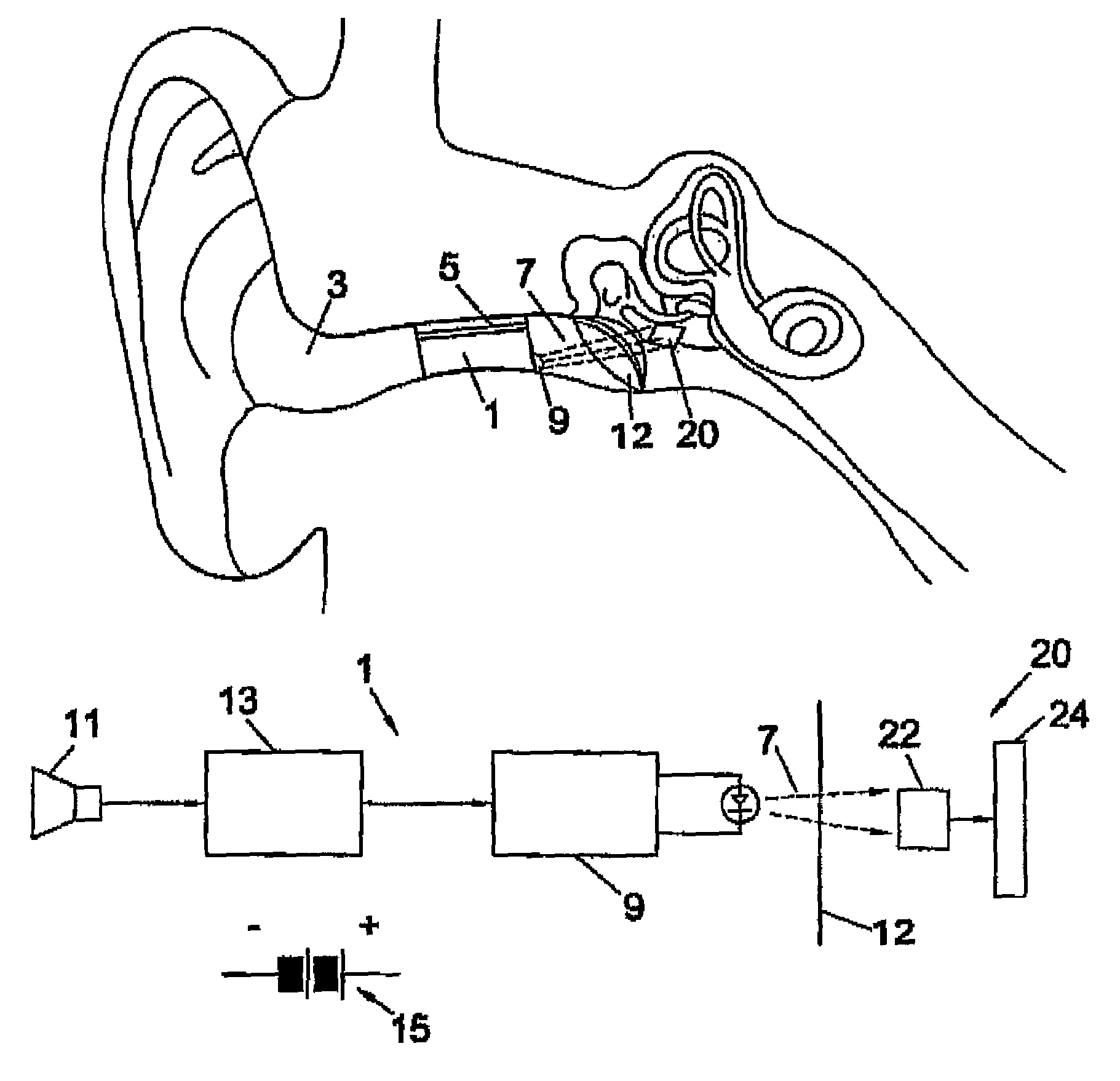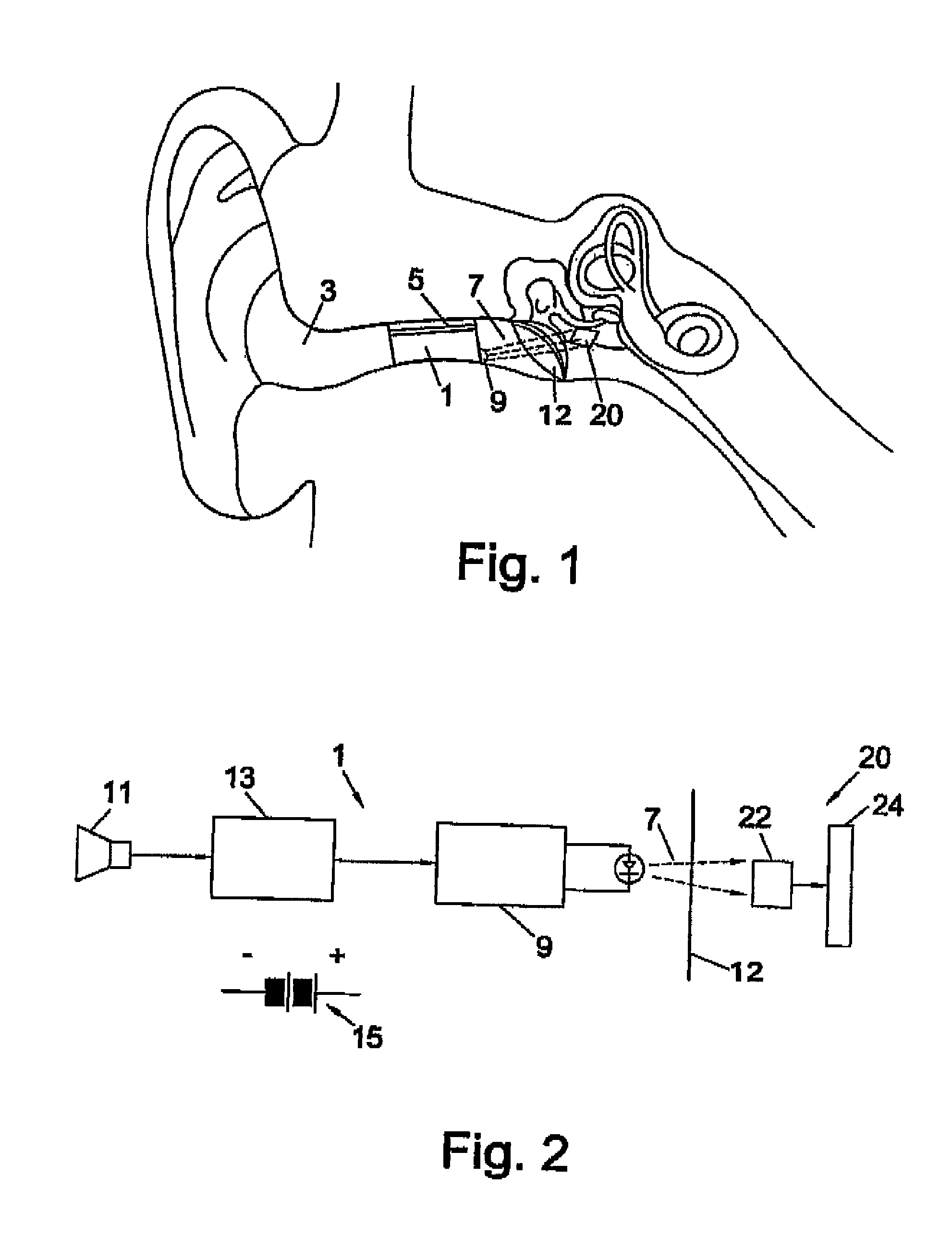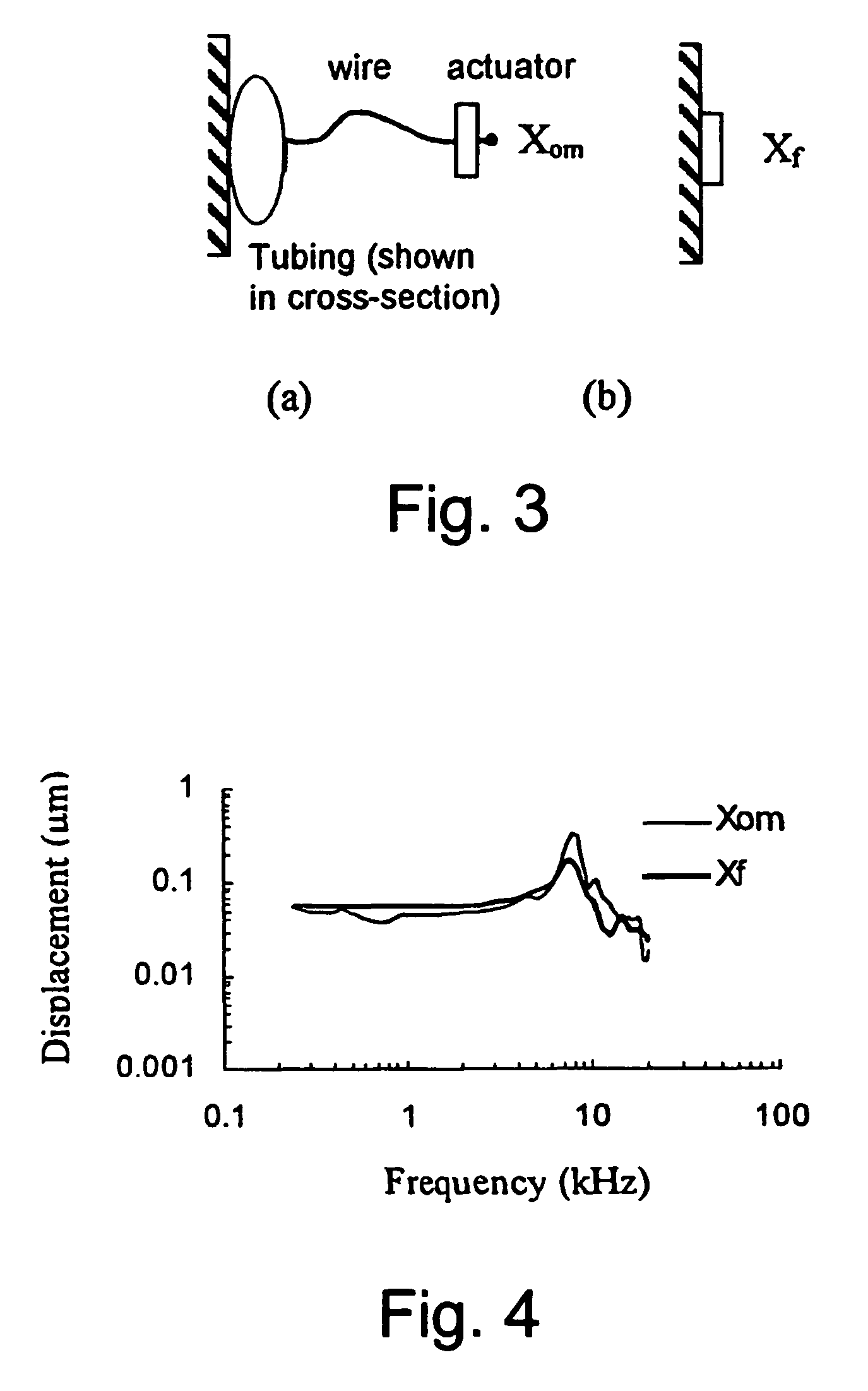Hearing implant
a technology of hearing aids and implants, which is applied in the field of hearing aid systems, can solve the problems of ineffective means of repairing the cochlea or the nervous pathway to the brain, hearing aids, acoustic feedback, etc., and achieve the effects of increasing the displacement of the flexible diaphragm, and more space for accommodation
- Summary
- Abstract
- Description
- Claims
- Application Information
AI Technical Summary
Benefits of technology
Problems solved by technology
Method used
Image
Examples
Embodiment Construction
[0032]FIG. 1 shows somewhat schematically the relative locations of the external ear canal module 1 and ear implant 20. As can be seen, the ear module 1 is located in the ear canal 3. The ear module 1 has a channel 5 through the module 1 in order to prevent occlusion of the ear canal 3. A modulated IR light signal, represented by the dashed lines 7, is emitted by an LED 9, through the ear drum 12, so as to be detected by an implant 20. In this embodiment, the implant 20 sits on the incudostapedial joint, so as to oscillate the stapes, although the implant could be located elsewhere, for example in the promontory.
[0033]FIG. 2 shows in more detail the components of the ear module 1 and implant 20 of the present invention. The ear module 1 comprises a microphone 11, and associated electronic circuiting 13 for transducing sound into an electrical signal which is in turn converted and transmitted as the modulated light signal 7 (shown as broken arrows) by the LED 9. Power for the ear mod...
PUM
 Login to View More
Login to View More Abstract
Description
Claims
Application Information
 Login to View More
Login to View More - R&D
- Intellectual Property
- Life Sciences
- Materials
- Tech Scout
- Unparalleled Data Quality
- Higher Quality Content
- 60% Fewer Hallucinations
Browse by: Latest US Patents, China's latest patents, Technical Efficacy Thesaurus, Application Domain, Technology Topic, Popular Technical Reports.
© 2025 PatSnap. All rights reserved.Legal|Privacy policy|Modern Slavery Act Transparency Statement|Sitemap|About US| Contact US: help@patsnap.com



